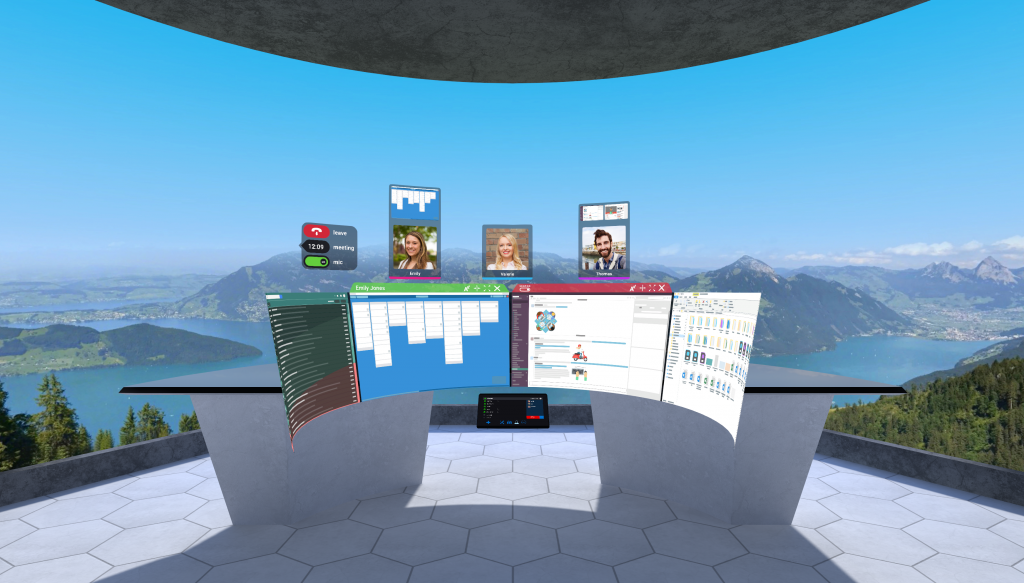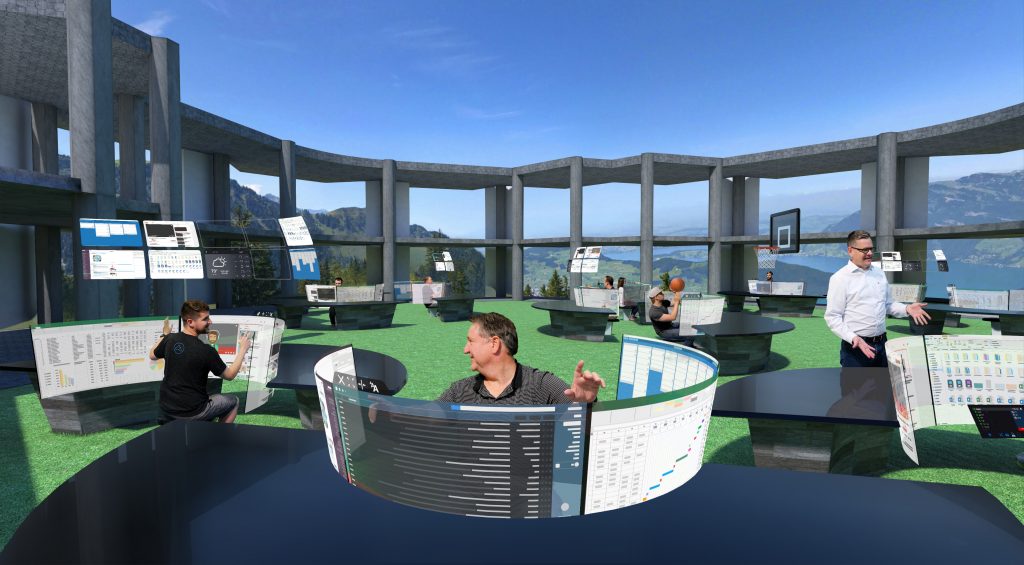Is virtual reality the future of business? Will holographic environments replace real life offices? And will office buildings become obsolete, allowing employees complete freedom of mobility, their workplace being easily accessible by putting on a VR headset?
Virtual reality has transformed the way we work, have fun and connect with others. The technology has become advanced enough to be capable of creating highly detailed and realistic 3D objects and even human characters. From big data visualization to virtual meetings with business partners located on the other side of the globe, virtual reality facilitates collaboration and increased work productivity. And innovative companies are constantly finding new ways to use this technology to adapt the work life to the changing lifestyle of the new generations.
I recently had the opportunity to chat with John Sallaway, the CEO and co-founder of vSpatial, an augmented and virtual reality platform that seeks to revolutionize the way we work. The app places users within a fully-customizable virtual office with dozens of virtual tools to increase their productivity. During our conversation, John shared his expertise on the future of working, and how AR/VR platforms like vSpatial could prove to disrupt the way businesses and employees interact with each other.

JOHN: I have sort of an unusual background for a tech startup co-founder. Back in 2016, when vSpatial was founded, I had been practicing law for about 10 years and was looking for a new set of challenges to work on. I had been friends with and worked in a volunteer and professional capacity with one of our other co-founders, Richard Platt. As luck would have it, Richard and I had lunch one day and I explained to him that I was looking to do something new. That’s when he laid out to me this vision he had of leveraging the power of spatial computing to create a virtual office where you could genuinely outdo anything that had ever been done in the world of productivity and collaboration applications. You could have as many big screen monitors as you wanted or watch a training video on a wall-sized screen, or share two or three applications with your co-workers while they did the same with you, and all while you talked to each other and used intuitive hand gestures to point and highlight and draw. It sounded like actually getting work done, rather than asking “Can you hear me?” or “Can you stop sharing your screen so I can share?” Remember, I had been stuck for over a decade using the traditional web conferencing solutions that everyone hates, so I was sold and I was inspired immediately, and I knew I wanted to be a part of it. At one point, I managed a team of 60 attorneys. Because of the unique nature of our work, we were all scattered in courthouses and home offices throughout the country. At that time, if an attorney wanted to call me and ask me about, say a landowner boundary, they would call and they would send me a picture on my phone or laptop of a map, and I would have to do the whole pinch and expand on the map thing, and they would say “look at that southern boundary: do you think landowner A or B owns that?” But look what we can do now just 2.5 years after Richard laid out his vision to me!

We can now use our mobile VR headsets to meet in virtual reality together. That attorney and I, as if we were standing next to each other, can look at a map that is as big as us. And that attorney can point at a spot and circle it and I can see it. It is very literally like being in the same room together talking about this life-sized map. It’s not just science fiction anymore. You can actually do this and it’s much more than feeling like you have the cutting edge of technology at your fingertips. It actually makes your job more delightful because you are able obtain, share and interact with data better and faster.
JOHN: I absolutely do think that it can replace physical office spaces and I think you’ll see a disruption to the commercial real estate industry that is tied to spatial computing. I’m not so bold to think that it can replace the need for all in-person meetings. I think there will always be a need for in-person meeting. For instance, you may choose an in-person meeting if body language is particularly important to the discussion. But I do think the vast majority of our need for physical office spaces could be replaced by VR/AR/MR. The numbers are also compelling. The average employee spends about 52 minutes per day on their commute, which translates to $2,600 per year in fuel cost. So that’s time and money that, as soon as you start to work remotely you realize is very valuable. On the employer side, the employer spends about $4,500 per year, per employee on office space. In San Francisco that number jumps to about $13,000 per employee, per year! That’s just the office space. The employer spends about $10,000 per year, per employee on IT costs. When you start talking about giving employees their time and money back while saving the employer money on office space and IT costs, you start talking about very compelling reasons to look to a virtual office.
vSpatial is a group of telecommunications, networking, cloud, and of course VR and AR experts with about 150 years of collective experience in those different areas.

JOHN: I think we’re rapidly approaching that. Obviously, we’re not there yet. It’s anybody’s guess, as it’s hard to be certain about this. If I did have to guess though, I would say in the next two to five years we will see a major uptick in adoption of these technologies. In two years, we’ll see the headsets reach a point in terms of comfort, price and quality that will begin to be compelling. It will go from “I’ve heard a little about VR or AR.” to “I really have to try this. This is affordable, it’s an amazing experience, it’s comfortable.”
We are not quite there yet, but we’re making incredible progress. For example, the Oculus Go, that was released in May. It’s a quality standalone experience, especially for business; a quality experience for under $200. It’s a standalone device that doesn’t need a cellphone and doesn’t need to be tethered to a computer. Then, you’ve got the Oculus Santa Cruz which we hope to hear about this week and the Magic Leap One, which was released this summer. These devices are making huge advances and will be the early drivers of meaningful adoption.
JOHN: That’s a great question–I really like that one. I think there could be a tendency to overwhelm ourselves with information. Think about the world we live in today. You are likely working with laptop screens, external monitors and tablet and phone screens — you can easily become overwhelmed because you have so much information coming at you. We know that there must be a point at which you have so much information at your fingertips that you can’t process the information any more. We also know that we are more productive when we work with multiple monitors. In fact, a recent study showed that we are 10% more accurate and 30% more productive when we use multiple screens. But, there is a point, and it’s different for everyone, at which you become overwhelmed and are not as productive any more.

We realize that and are very careful about it in the way we present our application. I wouldn’t describe vSpatial as overwhelming, I would describe it as empowering. You have the ability to arrange the information in a way that it feels good to you. We give users different places to put information depending on how important it is to them at the time. The primary place, right in front of them, is for information that is most important at that time. Then we give them other places to put information that may not be immediately relevant but may be useful to have at a moments notice. I appreciate your question because we have been very thoughtful ourselves about this particular issue. For us it’s not about blowing people away with 100 screens in front of them. It’s about helping our users be better at their jobs and that requires the freedom and flexibility to arrange your workspace in the way that works for you.
JOHN: Thank you for having me. It’s really an honor and exciting to talk about what you care so much about. Honestly, you don’t have to thank me, let me thank you!




